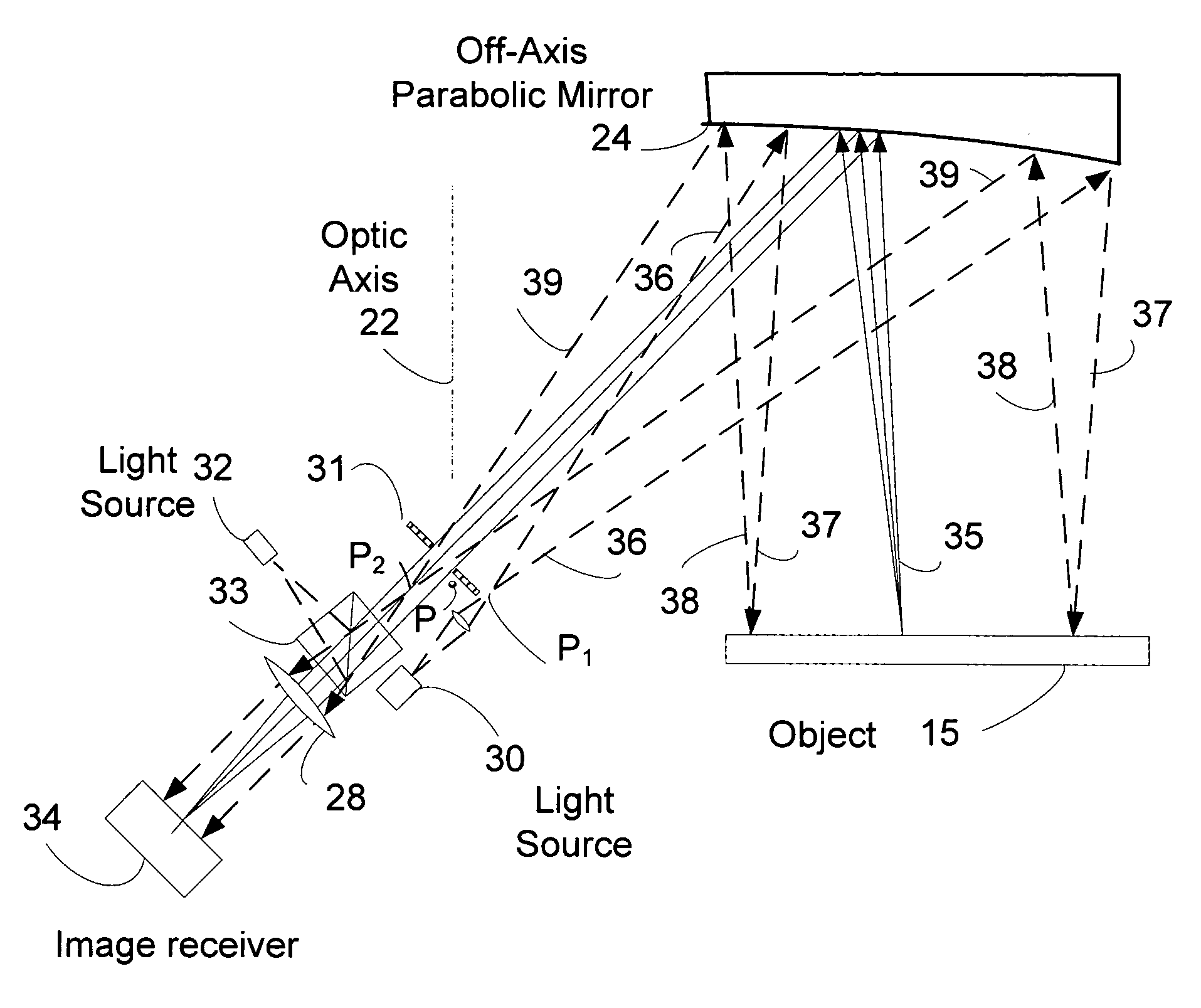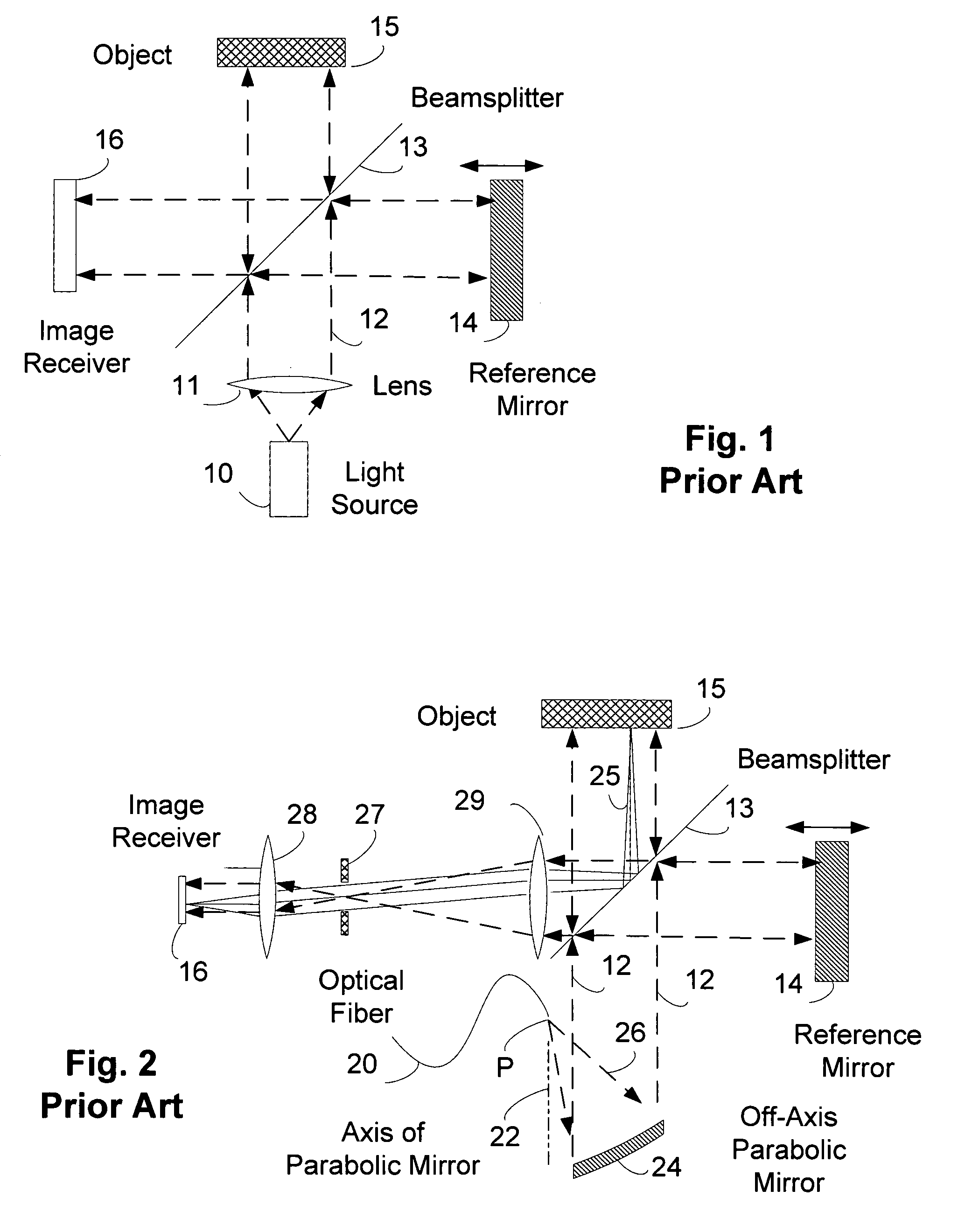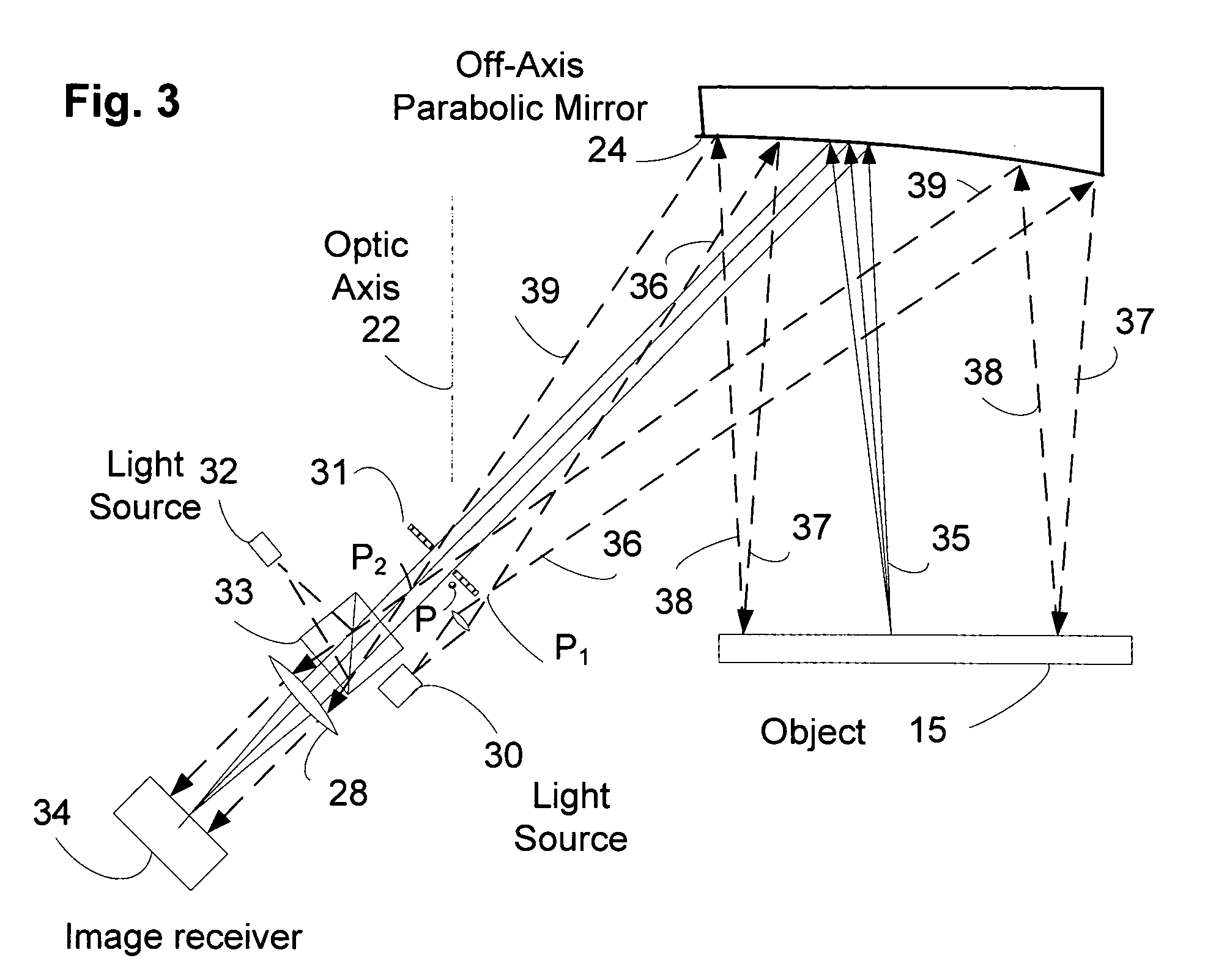Off-axis paraboloid interferometric mirror with off focus illumination
an interferometric mirror and off-focus technology, applied in the field of measuring the surface topography of objects, can solve the problems of difficult implementation and interferometric comparison of objects with a known surface, and achieve the effect of less expensive optical elements and ligh
- Summary
- Abstract
- Description
- Claims
- Application Information
AI Technical Summary
Benefits of technology
Problems solved by technology
Method used
Image
Examples
Embodiment Construction
[0024]FIG. 1 shows a sketch of a prior art interferometer. The particular interferometer shown in FIG. 1 is conventionally called a Michelson interferometer, and has been used since the nineteenth century in optical experiments and measurements. A light source 10 produces light which is collimated by passing through a lens system 11 to produce a parallel beam of light 12 which passes to a beamsplitter 13. The beam of light 12 is partially reflected to a reference mirror 14 and partially transmitted to an object 15. Light reflected from the reference mirror 14 partially passes through the beamsplitter to an image receiver 16. Light reflected from the object is partially reflected from the beamsplitter 15 and is passed to the image receiver 16. The image receiver 16 may be film, or may be an electronic photodetector or a CCD or a CMOS array, or any other image receiver known in the art. The image receiver 16 may also include additional lenses, not shown, for imaging purposes.
[0025] I...
PUM
 Login to View More
Login to View More Abstract
Description
Claims
Application Information
 Login to View More
Login to View More - R&D
- Intellectual Property
- Life Sciences
- Materials
- Tech Scout
- Unparalleled Data Quality
- Higher Quality Content
- 60% Fewer Hallucinations
Browse by: Latest US Patents, China's latest patents, Technical Efficacy Thesaurus, Application Domain, Technology Topic, Popular Technical Reports.
© 2025 PatSnap. All rights reserved.Legal|Privacy policy|Modern Slavery Act Transparency Statement|Sitemap|About US| Contact US: help@patsnap.com



